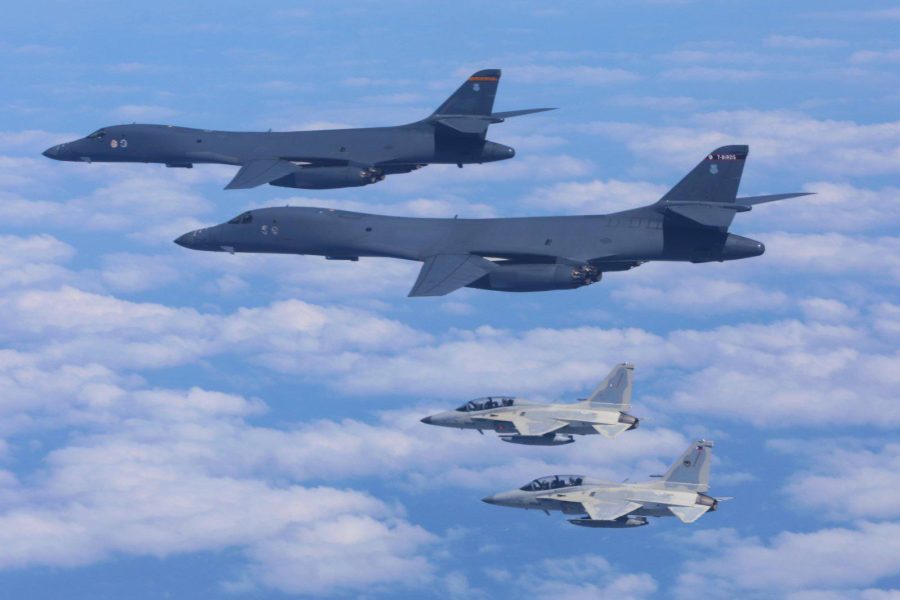U.S. Air Force B-1 bombers flew alongside Philippine fighter jets over the South China Sea on Feb. 4 in a significant show of airpower in a disputed region.
The Philippine Air Force announced on social media that three of its FA-50 fighters flew along with two B-1Bs over the West Philippine Sea, the Philippines’ designation for a region in the South China Sea that includes its Exclusive Economic Zone.
In its own social media post, Pacific Air Forces said the bombers and fighters flew “a joint air patrol and intercept exercise to enhance our operational coordination, refine our tactical and operational strategies together, and maintain our air dominance and regional security in a #FreeAndOpenIndoPacific.”
The B-1s involved in this latest flight are from a group of four from Ellsworth Air Force Base, S.D., that deployed to Guam for a Bomber Task Force rotation beginning Jan. 15—the first such deployment of 2025. Two of those four bombers flew with Japanese and South Korean fighters in the airspace between the two countries to kick off the task force.
In a briefing with local media, a Philippine Air Force spokesperson said the patrol flew over “Bajo de Masinloc”—the Philippines’ name for the disputed Scarborough Shoal, a highly contested island in the South China Sea. Both the Philippines and China claim sovereignty over the shoal, and have faced off both in international courts and militarily.
In August 2024, the Philippines accused a Chinese aircraft of releasing flares near one of its planes, which was flying a patrol near the Scarborough Shoal. In January, a Chinese coast guard ship reportedly patrolled near the shoal, coming within 77 nautical miles of the Philippines.
U.S. Air Force flights over the South China Sea are relatively routine, and at times create encounters with Chinese warplanes sent up to intercept the flights. In late 2023, the Pentagon cited hundreds of “unsafe” intercepts by Chinese aircraft over the previous two years, accusing the China’s Peoples Republic Army Air Force (PLAAF) of unprofessional behavior. No such incidents have been publicized in the past year, however. It is unclear whether the PLAAF altered its tactics as a result of the U.S. actions or if the U.S. Air Force also changed tactics in the region.


